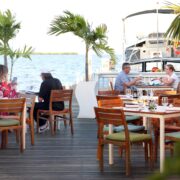It’s January, and that implies the beginning of another school year in South Africa. In under seven days, understudies (or students, as they’re brought in South Africa) and educators will fill homerooms, expecting to set out on another extended time of learning, illumination, and development. It’s a great time for understudies to ride the energy acquired with last year’s record-breaking secondary school pass rate. For any of us in the US, Canada, and other Western nations, it’s a great chance to find out about the educational encounters that our young South African companions will have this year.
Essential education is compulsory in South Africa. As indicated by the nation’s Constitution, South Africa has a commitment to make education accessible and open. All South Africans reserve the option to a fundamental education, including grown-up essential education and further education.
School in South Africa starts in grade 0, or grade R. It’s what could be compared to our kindergarten, a period of school planning and youth socialization. Grades 0 to 9 make up Broad Education and Preparing, trailed by Additional Education and Preparing (FET) from levels 10 to 12. Understudies either stay in secondary school during this time, or enter more particular FET establishments with an accentuation on vocation arranged education and preparing. In the wake of passing the broadly regulated Senior Endorsement Assessment, or “matric,” a few understudies will proceed with their education at the tertiary level, pursuing degrees up to the doctoral level. North of 1,000,000 understudies are signed up for South Africa’s 24 state-supported schools and colleges.
With a strong educational construction set up, South Africa proceeds with the long and exhausting course of defeating the oppressive inheritance abandoned by 40 years of politically-sanctioned racial segregation education. Under that framework, white South African kids got a quality tutoring practically free of charge. Dark understudies, then again, approached exclusively to “Bantu education”, a framework in light of the out of line reasoning that there was no spot in South African culture for dark Africans “over specific types of work” (a statement credited to HF Verwoerd, the engineer of the Bantu Education Demonstration of 1953). During the 1970s, government spending on dark education was one-10th of expenditure on whites. By the 1980s, educator to student proportions in elementary schools found the middle value of 1:18 in white schools and 1:39 in dark schools. Indeed, even the norms for education were different among dark and keeping in mind that schools: while 96% of all educators in white schools had showing declarations, just 15% of educators in dark schools were confirmed. Of course during politically-sanctioned racial segregation, secondary school graduation rates for dark understudies were not exactly around 50% of the rate for whites.
Bantu education was canceled with the finish of politically-sanctioned racial segregation in 1994. By and by, South Africa keeps on battling with imbalance and educational incongruities. Seventeen years after the finish of politically-sanctioned racial segregation, by far most of unfortunate dark kids are denied a quality education at seriously denied state funded schools. North of 3/4 of these schools don’t have libraries, and, surprisingly, more don’t have a PC. Around 90% of government funded schools have no science research facility, and the greater part of all understudies either have no course readings or need to share them. Over a fourth of state funded schools don’t in any event, having running water.
More well-to-do South Africans (read: White South Africans, alongside a little however developing contingent from the dark working class) can stand to send their kids to supposed previous “Model C” schools, openly subsidized schools that were recently permitted exclusively for white understudies. These schools charge additional school expenses to enhance educators’ pay rates and purchase additional assets. As anyone might expect, these previous white-just schools have infinitely better offices and nature of education.
School results recount the tale of South Africa’s educational disparities. In 2009 simply over portion of dark understudies breezed through the secondary school end of the year test, contrasted and 99 percent of whites. Of the South African populace north of 20 years of age, 65% of the people who are white and just 14% of the individuals who are dark have a secondary school degree or higher. The abberations stay at the college level. Albeit dark Africans represent 80% of the entire South African populace, they make up not exactly 50% of all college understudies. Short of what one of every 20 dark South Africans winds up with a degree, contrasted and close to half, all things considered.
Poor and stranded kids, like those at St. Vincent Kids’ House, are especially defenseless against the disparities obvious in South African education. It is outside the realm of possibilities for these youngsters to get to the nature of education accessible to additional advantaged understudies. Notwithstanding high desires and remarkable potential, they basically can’t bear to go to schools beyond those in the packed dark municipalities or poor rustic regions where they live. Without a quality education, they can’t get away from their lives of destitution, permitting these imbalances to proceed with many ages. The requirement for outside help, for example, that presented by the Khanyisela Grant, is basic. So what will the following South African school year bring other than learning, illumination, and development? Balance and equity, because of you and your help of the Khanyisela Grant.












Comments